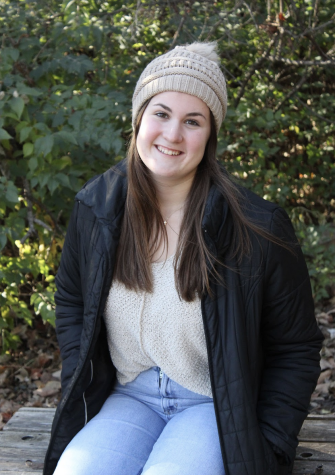Winter Blues

Almost every winter, when the time change hits, so does my lack of motivation, fatigue and loss of interest in the activities I’ve always loved. And every spring, I slowly began to recover and find joy and motivation again.
So what caused this shift in my moods and thoughts?
Something that millions of Americans struggle with each year, according to the National Institute for Mental Health (NIMH): a specific type of depression called Seasonal Affective Disorder (SAD).
According to NIMH, SAD is different from regular depression because it is recurrent during specific seasons, and normally lasts for about 4-5 months of the year, though the time can vary for specific people. It can occur in the summer, but is much more common in the winter due to the lack of sunlight and outdoor activities.
Staying indoors all the time and rarely seeing the sun played a big part in my mental health. Although I experience some level of depression year-round, I’ve found that it gets more difficult in the winter months because of SAD.
The constant cold and lack of natural sunlight all around leaves me feeling apathetic about everything in my life. Nothing feels exciting when it’s miserable to step outside into the darkness and feel the freezing winds.
Identifying the difference between year-round depression and SAD can be difficult. NIMH recommends talking to a mental health professional, but if someone has been experiencing symptoms of depression during specific seasons, like winter or summer, for at least two consecutive years, they likely have some form of depression or SAD.
When I was diagnosed with depression and began to tell my friends, many people were confused. I received countless remarks of “but you seem so happy!” and “look at all the good things you have going on, you can’t be sad!”
Comments like these, and telling people to “just be happy”, furthers the stigma around mental health diagnoses and stops people from talking about issues that they need treatment for. The best way to help a friend with depression or SAD is simply to be there for them and be supportive with anything they need.
Once someone has identified that they have the disorder, treating SAD is a whole different story, and depends on the intensity they are experiencing.
Aetna recommends focusing on nutrition, exercise, sleep and relaxation, but overall recommends that people focus on winter activities that increase their time outside, like hiking or skiing, to allow them to soak up some Vitamin D and fresh air.
Vitamin D deficiencies are also linked to depression, and people can combat winter SAD with Vitamin D supplements if recommended by their doctor.
For more severe cases, NIMH explains, light therapy can make a big difference. This treatment mimics natural light by exposing users to a very bright light box for 30-45 minutes a day.
Treating SAD in my life is definitely a learning curve, but being intentional about scheduling activities that I can look forward to so I can keep my spirits up.
I also make sure I’m getting enough sleep to keep my fatigue to a minimum, and take Vitamin D pills and other medications as prescribed by my doctor.
If anyone is experiencing depression in any form, including SAD, they can talk to a loved one or trusted adult about the way they’re feeling. An appointment can be made with any of the LHS counselors on the counseling tab of the LHS website. If people have suicidal thoughts, they can call the national Suicide Prevention Line at (800) 273-8255.



